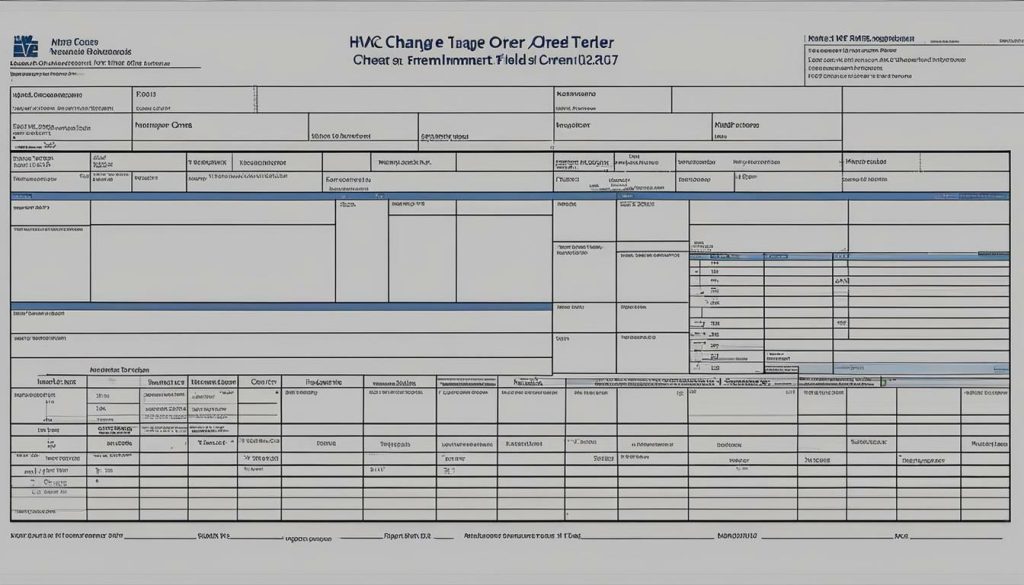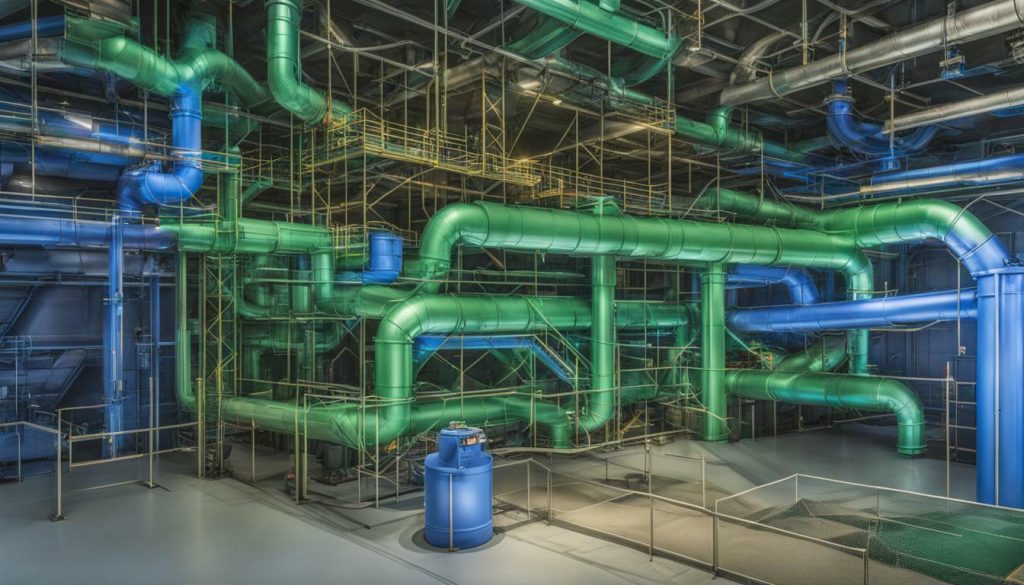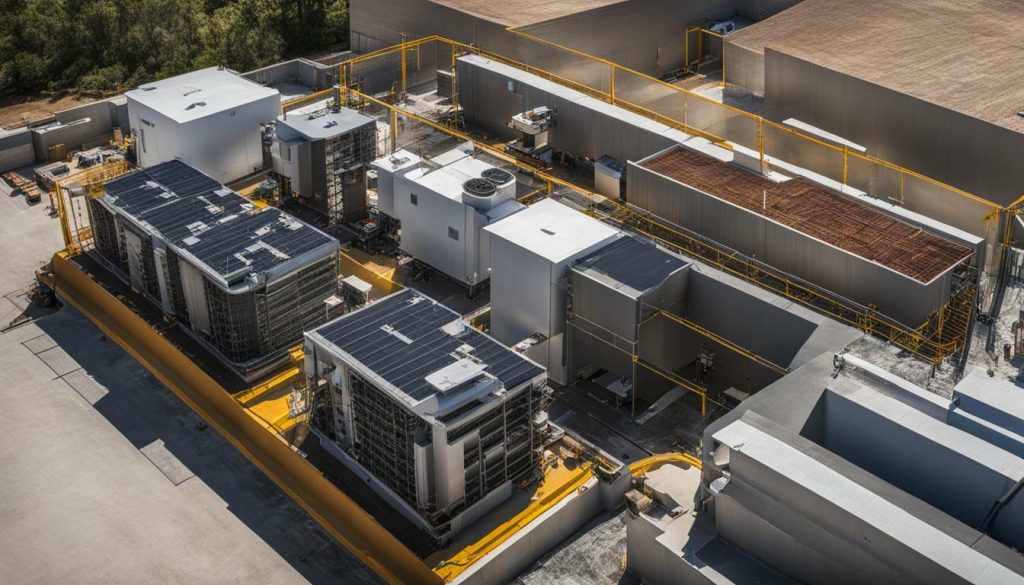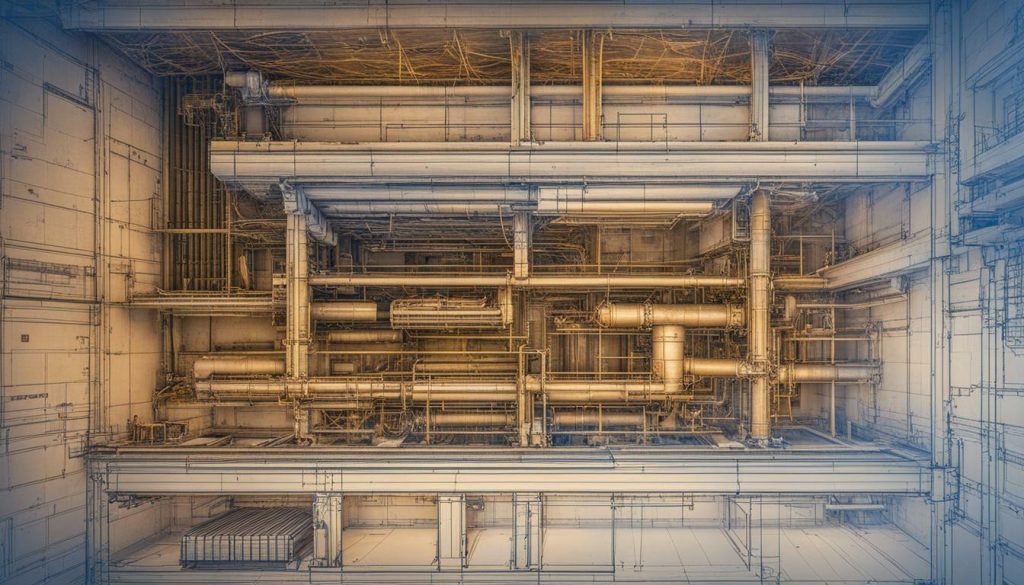Effective management of HVAC change orders is crucial for the success of construction projects. In the dynamic environment of construction, changes are inevitable and can arise from various factors such as evolving client requirements, design modifications, unforeseen site conditions, regulatory changes, and unexpected events. To ensure project success, it is essential to have a structured process in place for handling these changes and amendments in HVAC projects.
By effectively managing change orders, construction projects can control costs, maintain schedules, and enhance client satisfaction. Evaluating the impact of proposed changes on the project budget helps identify potential cost overruns and enables proactive cost control measures. Similarly, assessing the impact of changes on timelines, coordinating with contractors, and ensuring the seamless integration of changes contributes to keeping projects on schedule.
Addressing evolving client needs and requirements is a key aspect of managing HVAC change orders. By actively listening to clients and considering their requests, construction professionals can effectively determine the feasibility of changes and provide transparent communication throughout the process. This fosters client satisfaction and serves as a foundation for strong client relationships.
Effective change management also helps reduce rework and conflicts by systematically evaluating changes and their impacts. By considering factors such as design specifications, completed work, and potential conflicts, project stakeholders can make informed decisions and promote smooth project execution. Transparent documentation of change requests, approvals, and associated activities also enhances project transparency and accountability.
Common types of changes in construction projects include design changes, scope changes, schedule changes, cost changes, contractual changes, regulatory changes, and unforeseen changes. These changes can arise from various factors such as design modifications, unforeseen site conditions, client requests, regulatory requirements, and market conditions. Recognizing and understanding these factors is essential for effectively managing HVAC change orders.
Managing changes in HVAC systems in changed environments requires adherence to revised industry standards and guidelines. Operational load changes, distributed occupancy within workspaces, and health concerns should be considered when operating and maintaining HVAC systems. Close collaboration with original equipment manufacturers (OEMs) and service providers is crucial for adapting HVAC systems to changed environments.
Key Takeaways:
- Effective management of HVAC change orders is crucial in construction projects.
- Change is inevitable and can arise from various factors, including evolving client needs, design modifications, and unforeseen site conditions.
- Proactive evaluation of the impact of changes helps control costs and maintain project schedules.
- Transparent communication and documentation enhance project transparency and accountability.
- Adherence to industry standards and guidelines is essential for adapting HVAC systems to changed environments.
Understanding the HVAC Change Order Process
To effectively manage HVAC change orders, it is important to understand the process and roles involved. Change is inevitable in construction projects, and having a structured change order process is crucial for successful project execution. This section will provide insights into the HVAC change order management process, roles and responsibilities of contractors, and the importance of using a standardized HVAC change order form.
The HVAC change order process involves several key steps. First, when a change is requested, it is essential to document the details of the change, including the scope, design modifications, and any impact on budget or schedule. This information should be captured using a standardized HVAC change order form, which helps ensure consistency and clarity in communication.
Once the change order is submitted, it goes through a review process. This typically involves evaluating the impact of the change on the project, including cost, schedule, and feasibility. The change order may need to be reviewed by various stakeholders, such as the project manager, HVAC contractor, and client. Clear communication and collaboration among all parties are essential during this stage.
| Benefits of using a standardized HVAC change order form: |
|---|
| 1. Consistency: A standardized form ensures uniformity and clarity in documenting change orders. |
| 2. Information capture: The form captures all essential details of the change, allowing for proper evaluation and review. |
| 3. Accountability: A standardized form establishes a clear record of change requests, approvals, and associated activities. |
In conclusion, understanding the HVAC change order process is vital for effective project management. By utilizing a standardized HVAC change order form and following a structured process, the project team can ensure clear communication, proper evaluation of changes, and successful integration of those changes into the ongoing project.
Implementing a Robust HVAC Change Order Template
An effective HVAC change order template and streamlined process flow are essential for managing changes efficiently. With the complex nature of HVAC projects, having a standardized template ensures consistency and clarity throughout the change order process.
The HVAC change order template should include key elements such as project information, detailed description of the change, impact assessment, cost and schedule implications, and approval signatures. By including these elements, all stakeholders involved can easily understand the change and its consequences on the project.
To create an efficient process flow, it is important to establish clear steps for initiating, reviewing, approving, and implementing change orders. This may involve defining roles and responsibilities, establishing communication channels, and setting timelines for each stage of the change order process.

Having a well-defined process flow not only streamlines the change order management but also ensures that changes are evaluated promptly, communicated effectively, and implemented in a timely manner. The use of a standardized template and an organized process flow promotes collaboration, consistency, and transparency among all project stakeholders.
Submitting and Reviewing HVAC Change Orders
Accurate submission and thorough review of HVAC change orders are critical for maintaining project continuity. This stage of the change order process ensures that all requested changes are properly documented, reviewed, and approved before implementation. By following established HVAC change order procedures, you can minimize delays, avoid conflicts, and ensure that changes are effectively integrated into the project.
When submitting HVAC change orders, it is important to provide clear and detailed information about the proposed changes. This includes outlining the scope of work, identifying any potential impact on the project schedule or budget, and providing supporting documentation such as revised drawings or specifications. By submitting comprehensive change orders, you can facilitate a more efficient and accurate review process.
During the review stage, HVAC change orders are assessed by relevant stakeholders, including contractors, project managers, and design professionals. This review process ensures that the proposed changes align with project requirements, adhere to regulatory standards, and are feasible within the current project constraints. Timely review of change orders is crucial to avoid unnecessary delays and maintain project momentum.
To streamline the review process, it is beneficial to establish a clear communication channel for submitting and reviewing HVAC change orders. This can include regular coordination meetings, online collaboration platforms, or designated change order review teams. By maintaining open lines of communication and implementing effective review procedures, you can ensure that all change orders are thoroughly evaluated and approved in a timely manner.

Sample Table: HVAC Change Order Review Status
| Change Order ID | Description | Reviewer | Status |
|---|---|---|---|
| CO-001 | Installation of additional HVAC vents in conference rooms | John Smith (Design Engineer) | Under Review |
| CO-002 | Revised ductwork layout for improved airflow | Sarah Johnson (Project Manager) | Approved |
| CO-003 | Change in HVAC control system specifications | David Thompson (Mechanical Contractor) | Rejected |
Evaluating the Impact of HVAC Change Orders
Assessing the impact of HVAC change orders is essential for effective project management. By thoroughly evaluating proposed changes, project teams can make informed decisions and minimize potential disruptions to the construction process. Evaluating the impact of changes involves considering factors such as project budget, schedule, design specifications, and overall project goals.
One effective way to evaluate the impact of HVAC change orders is by conducting a cost analysis. This involves assessing the financial implications of the proposed changes, including any potential cost overruns or savings. By analyzing the cost impact, project teams can determine the feasibility of implementing the change and make informed decisions based on the project’s budget constraints.
Another crucial aspect of evaluating change orders is assessing the impact on project schedules. Project teams need to consider how the proposed changes will affect the construction timeline and whether adjustments need to be made to accommodate them. Coordinating with contractors, subcontractors, and other stakeholders is vital in ensuring that changes are seamlessly integrated into the ongoing construction activities.
| Benefits of Evaluating the Impact of HVAC Change Orders |
|---|
| Control costs and avoid budget overruns |
| Maintain project schedules and prevent delays |
| Ensure adherence to design specifications |
| Coordinate with contractors for seamless integration |
Additionally, evaluating the impact of HVAC change orders involves assessing the compatibility of the proposed changes with the project’s design specifications. This evaluation ensures that the changes align with the project’s original intent, maintain the required quality standards, and comply with industry regulations and guidelines.
By conducting a thorough evaluation of HVAC change orders, project teams can make well-informed decisions that minimize rework, conflicts, and disruptions. It also enables effective communication and collaboration among project stakeholders, leading to better project outcomes and client satisfaction.

Remember, effective evaluation of the impact of HVAC change orders is crucial for successful project management. Taking the time to carefully assess changes in terms of cost, schedule, design, and project goals helps ensure that projects stay on track and deliver the desired results.
Coordinating with Contractors for Seamless Integration
Effective coordination with HVAC contractors is key to successfully integrating change orders in HVAC projects. It requires clear communication, collaboration, and cooperation between all project stakeholders. By establishing strong relationships and implementing robust processes, you can minimize disruptions, ensure timely implementation of change orders, and maintain project quality.
One essential aspect of coordinating with contractors is setting clear expectations and responsibilities. Clearly define the roles and responsibilities of each party involved in the change order process, including contractors, subcontractors, and project managers. This clarity helps prevent confusion and ensures that everyone understands their roles in implementing change orders.
Another critical element is establishing effective channels of communication. Maintain regular communication with contractors to keep them informed about changes and amendments. Share relevant project documentation, such as updated plans, specifications, and schedules, to facilitate seamless integration of change orders. Encourage open and transparent communication, ensuring that contractors have a platform to ask questions, clarify requirements, and provide input.
| Benefits of Coordinating with Contractors | Explanation |
|---|---|
| Minimized Delays and Disruptions | By keeping contractors informed and involving them in the change order process, you can minimize delays and disruptions. Contractors can adjust their schedules, allocate resources effectively, and seamlessly integrate changes into their work. |
| Quality Assurance | Effective coordination ensures that contractors have a clear understanding of the changes and can implement them correctly. This helps maintain quality standards and prevents rework or additional costs associated with poor execution. |
| Cost Control | Coordinating with contractors allows for an accurate evaluation of the cost impact of change orders. Contractors can provide insights into the pricing and feasibility of proposed changes, enabling effective cost control. |
| Timely Implementation | When contractors are involved in the change order process from the beginning, they can plan and allocate resources accordingly. This ensures timely implementation of change orders, avoiding delays and schedule overruns. |
By prioritizing effective coordination with HVAC contractors, you can achieve seamless integration of change orders in HVAC projects. It promotes collaboration, ensures timely implementation, and helps maintain project quality and cost control. Remember to establish clear expectations, maintain open communication channels, and collaborate closely with contractors throughout the change order process.

Addressing Evolving Client Needs and Requirements
Understanding and addressing evolving client needs and requirements is vital for successful HVAC change order management. Clients’ expectations may change throughout a construction project, requiring adjustments to the HVAC system design, specifications, and scope. By actively engaging with clients and proactively anticipating their changing needs, contractors can effectively manage HVAC change orders and ensure client satisfaction.
During the change order process, it is crucial to establish clear channels of communication with clients to understand their requirements fully. Regular meetings and consultations help identify potential changes early on, providing an opportunity to evaluate the feasibility and impact of requested modifications. By involving clients in the decision-making process and providing transparent information about the implications of change orders, contractors can cultivate trust and strengthen professional relationships.
One effective approach for addressing evolving client needs and requirements is to create a client requirements matrix. This matrix outlines the client’s project objectives, desired outcomes, and specific requirements for the HVAC system. By aligning proposed changes with the matrix, contractors can evaluate the impact of change orders on the overall project and make informed decisions. The matrix also serves as a reference point for communicating with clients, ensuring that their needs are considered throughout the change order process.
| Key Steps in Addressing Evolving Client Needs and Requirements |
|---|
| 1. Regularly communicate and engage with clients to understand their changing needs and requirements. |
| 2. Establish a client requirements matrix to document project objectives, desired outcomes, and specific HVAC system requirements. |
| 3. Evaluate proposed changes against the client requirements matrix to assess the impact on the project and make informed decisions. |
| 4. Maintain transparent communication with clients throughout the change order process, providing clear information on the implications of requested modifications. |
By prioritizing client needs and actively managing change orders in response to evolving requirements, HVAC contractors can successfully navigate project complexities while delivering high-quality results.

Reducing Rework and Conflicts through Systematic Evaluation
By systematically evaluating HVAC change orders, rework and conflicts can be minimized, promoting project efficiency and quality. Effective evaluation of change orders ensures that modifications are carefully assessed for their impact on design, specifications, and completed work. This systematic approach helps identify potential conflicts and resolve them proactively, avoiding costly rework and delays.
One way to streamline the evaluation process is by using a structured evaluation checklist that covers key aspects, such as the feasibility of the proposed change, its impact on project timelines, costs, and resources, and the compatibility with existing systems. By considering these factors during the evaluation, project stakeholders can make informed decisions about whether to approve or modify change orders, ensuring that the project stays on track.
Another important aspect of systematic evaluation is effective communication and collaboration among project stakeholders. Regular meetings and discussions involving the HVAC contractor, design team, project manager, and other relevant parties allow for a comprehensive review of proposed changes. This collaborative approach promotes consensus-building and helps resolve any conflicts or discrepancies early on, reducing the likelihood of rework or disputes later in the project.
| Benefits of Systematic Evaluation |
|---|
| Minimizes rework and conflicts |
| Ensures project efficiency and quality |
| Identifies potential conflicts and resolves them proactively |
| Streamlines the evaluation process |
In addition to systematic evaluation, comprehensive documentation of change orders plays a vital role in reducing rework and conflicts. Maintaining a clear record of approved changes, including their scope, requirements, and associated actions, provides a reference point for all project stakeholders. This documentation fosters accountability and transparency, ensuring that everyone is aware of the approved changes and their impact on the project.
Ultimately, by adopting a systematic approach to the evaluation of HVAC change orders, construction projects can minimize rework, conflicts, and costly delays. Through effective evaluation, clear communication, collaboration, and documentation, project efficiency and quality can be maintained, leading to successful project outcomes.

Enhancing Transparency and Accountability through Documentation
Documentation plays a crucial role in enhancing project transparency and accountability during HVAC change order management. By maintaining comprehensive records of change requests, approvals, and associated activities, project stakeholders can ensure clear communication, effective decision-making, and risk management. Consistently documenting change orders helps create a transparent audit trail, enabling project teams to track the evolution of the project and hold parties accountable for their actions.
In addition to maintaining accountability, documentation facilitates effective communication among project stakeholders. By documenting change requests and associated details, such as the rationale behind the change, the proposed scope, and any impact on the project budget or schedule, project teams can communicate changes clearly and concisely. This helps minimize misunderstandings and ensures that all parties involved have a shared understanding of the changes being implemented.
Furthermore, documentation enables project teams to evaluate the impact of change orders on the project and make informed decisions. By keeping a record of the changes made and their effects on the design, specifications, and completed work, project teams can assess the feasibility and implications of each change. This evaluation process helps identify potential conflicts, minimize rework, and maintain project quality, ensuring that the project remains on track despite the changes.
| Benefits of Documentation in HVAC Change Order Management |
|---|
| Enhances project transparency and accountability |
| Facilitates effective communication among project stakeholders |
| Enables evaluation of the impact of change orders on the project |
In summary, documentation is a critical aspect of HVAC change order management, promoting transparency, accountability, and effective communication. By maintaining comprehensive records, project teams can ensure that change orders are properly documented, evaluated, and implemented, minimizing risks and maximizing project success.

Resources:
- Top 10 Tips for Effective HVAC Change Order Management
- Best Practices for Documenting HVAC Change Orders
- Guide to Establishing a Transparent Change Management Process
Common Types and Factors of Changes in HVAC Projects
HVAC projects experience various types of changes, including design modifications, scope changes, and unforeseen circumstances. These changes can occur due to several factors such as evolving client requirements, regulatory updates, or unexpected issues arising during construction.
Design changes are one of the most common types of changes in HVAC projects. They may involve alterations to the system layout, equipment specifications, or ductwork configurations. These changes often arise due to client requests, design clarifications, or optimization of system performance. It is crucial to carefully evaluate the impact of design changes on the overall project, considering factors like cost implications, timeline adjustments, and compatibility with existing systems.
Scope changes are another significant aspect of HVAC projects. They involve modifications to the project’s scope, such as adding or removing HVAC-related tasks or systems. Scope changes can be triggered by evolving client requirements, changes in project goals, or external factors like building code updates. Managing scope changes requires effective communication between project stakeholders and a structured change management process to ensure clarity, accountability, and coordination.
| Common Types of Changes | Factors Leading to Changes |
|---|---|
| Design changes | Client requests, design clarifications, system optimization |
| Scope changes | Evolving client requirements, changes in project goals, building code updates |
| Unforeseen circumstances | Equipment failures, material shortages, weather-related issues |
Unforeseen circumstances can also necessitate changes in HVAC projects. These may include equipment failures, unforeseen site conditions, material shortages, or weather-related issues. Such circumstances can have a significant impact on project timelines, budgets, and system performance. Responding to these changes requires a proactive approach, prompt problem-solving, and close coordination with project teams, contractors, and suppliers.
Managing changes effectively in HVAC projects requires a structured change management process, clear communication channels, and collaboration among all project stakeholders. By anticipating potential changes, evaluating their impact, and implementing appropriate solutions, HVAC professionals can ensure project success and deliver high-quality systems that meet the evolving needs of the clients.

Adapting HVAC Systems to Changed Environments
Adapting HVAC systems to changed environments requires adherence to revised industry standards and close collaboration with OEMs and service providers. As construction projects progress and conditions evolve, HVAC systems need to be flexibly adjusted to meet new requirements. This is especially true in response to revised industry standards and guidelines that aim to improve energy efficiency, indoor air quality, and occupant comfort.
One key aspect of adapting HVAC systems to changed environments is evaluating operational load changes. As project scopes and building usage evolve, the operational demands on HVAC systems may shift. For example, modified floor plans, changing occupancy levels, or altered usage patterns can impact the heating, cooling, and ventilation needs of a space. By closely monitoring these load changes and adjusting HVAC systems accordingly, facilities can ensure optimal performance and energy efficiency.
In addition to load changes, health concerns have become a significant factor in adapting HVAC systems. With the rise in awareness of airborne diseases and environmental sensitivity, stakeholders must consider the implementation of improved filtration systems, air purification technologies, and efficient ventilation strategies to provide a safe and healthy indoor environment.

| Factors to Consider for Adapting HVAC Systems | Examples |
|---|---|
| Revised Industry Standards | New guidelines for energy efficiency, indoor air quality, and occupant comfort |
| Operational Load Changes | Modified floor plans, changing occupancy levels, altered usage patterns |
| Health Concerns | Rise in awareness of airborne diseases and environmental sensitivity |
To ensure successful adaptation, collaboration with OEMs and service providers is crucial. These partners possess expertise in HVAC equipment, technologies, and maintenance practices. By working closely with them, facility managers can gain valuable insights into the latest advancements, industry best practices, and maintenance recommendations. This collaboration helps optimize the performance and longevity of HVAC systems, reducing the risks of breakdowns and ensuring a comfortable indoor environment.
Conclusion
Effective management of HVAC change orders is crucial for maintaining project continuity, controlling costs, and ensuring client satisfaction. Change is inevitable in construction projects, and having a structured change management process is essential for handling changes in project scope, design, specifications, schedule, and other aspects of HVAC projects.
By implementing a robust HVAC change order template and following a systematic evaluation process, construction professionals can reduce rework and conflicts, ensure adherence to design specifications, and minimize disruptions to ongoing projects. Coordinating with HVAC contractors and stakeholders throughout the change order process promotes seamless integration of changes and facilitates effective communication and collaboration.
Transparency and accountability are enhanced through documentation, which helps to track change requests, approvals, and associated activities. This documentation also facilitates decision-making, risk management, and effective communication among project stakeholders.
Common types of changes in HVAC projects include design changes, scope changes, and unforeseen changes. These changes may arise due to evolving client requirements, design modifications, unforeseen site conditions, and regulatory changes. It is important to adapt HVAC systems to changed environments by adhering to revised industry standards, considering operational load changes, and collaborating with OEMs and service providers for effective maintenance.
By embracing change and implementing effective change management practices, construction projects can achieve better outcomes while minimizing disruptions. By evaluating the impact of changes on project budgets, schedules, and specifications, construction professionals can maintain cost control, schedule adherence, and client satisfaction throughout HVAC projects.
FAQ
What is change management in construction projects?
Change management in construction projects involves a structured process for handling changes in project scope, design, specifications, schedule, or any other aspect that may arise during construction.
How does effective change management control costs in HVAC projects?
Effective change management helps control costs by evaluating the impact of proposed changes on the project budget and identifying potential cost overruns.
How does change management contribute to client satisfaction in HVAC projects?
Change management contributes to client satisfaction by effectively addressing evolving needs and requirements, identifying client needs, evaluating the feasibility of requested changes, and providing transparent communication.
How does change management reduce rework and conflicts in HVAC projects?
Change management helps reduce rework and conflicts by systematically evaluating changes and considering their impact on design, specifications, and completed work. It promotes clear communication, collaboration, and consensus-building among project stakeholders.
How does change management enhance project transparency and accountability in HVAC projects?
Transparent change management processes enhance project transparency and accountability by documenting change requests, approvals, and associated activities, facilitating effective communication, decision-making, and risk management.
What are some common types of changes in construction projects?
Common types of changes in construction projects include design changes, scope changes, schedule changes, cost changes, contractual changes, regulatory changes, and unforeseen changes.
What are the factors that lead to changes in construction projects?
Factors that lead to changes in construction projects include design modifications, unforeseen site conditions, client requests, regulatory requirements, and market conditions.
How should HVAC systems be adapted to changed environments?
Adapting HVAC systems to changed environments requires adherence to revised industry standards and guidelines. O&M teams should consider operational load changes, distributed occupancy within workspaces, and health concerns when operating and maintaining HVAC systems.





0 Comments